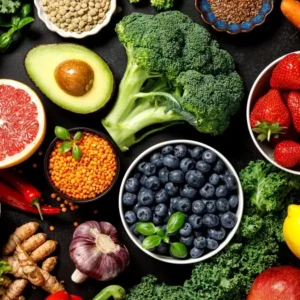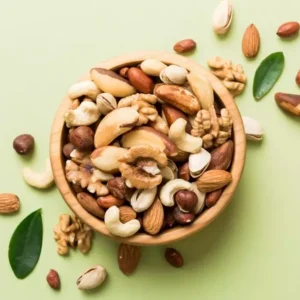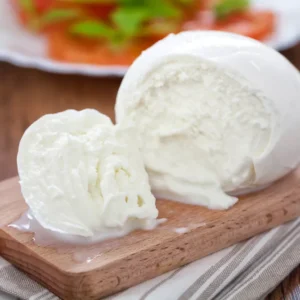DHA: everything about this Omega-3 fatty acid
Verified on 01/27/2022 by PasseportSanté
DHA or docosahexaenoic acid belongs to the Omega-3 family. Particularly recognized for its beneficial effects on the brain, it also helps preserve vision and the heart. Even if we can synthesize it from another Omega-3 (ALA), it is essential to provide enough of it through food.
Characteristic of DHA (Omega-3):
- Polyunsaturated fatty acid from the Omega-3 family
- Found in seafood
- DHA is essential for the brain and cognitive functions
- DHA deficiency promotes depression and neurodegenerative diseases (Alzheimer’s)
- Protective effect on the heart and eyes
Why consume foods rich in Omega-3 DHA?
Omega-3 fatty acid DHA: definition and benefits
Omega-3 DHA and brain
DHA, known as cervonic acid, is fundamental for the functioning of the nervous system. It facilitates neuronal connections and exchanges between the brain and the rest of the body. Thus, it preserves cognitive functions (memory, concentration, alertness) and limits the risks of neurodegenerative diseases (Alzheimer’s for example).
Quality of vision
The Omega-3 fatty acid DHA is an essential constituent of the eye and plays an essential role in the quality of vision. A good intake of DHA allows the renewal of retinal photoreceptors and limits the risk of eye pathologies (AMD, cataracts, etc.).
Cardiovascular protection
Omega-3 in general, and DHA in particular, have a protective role on the cardiovascular system. DHA thins the blood and has an anti-inflammatory effect which reduces the formation of atherosclerotic plaques and clots in the vessels. A correct dietary intake of DHA therefore helps reduce the risk of mortality linked to cardiovascular accidents.
20 foods rich in DHA
|
Food |
Portions |
(g) |
|
Salmon, fresh or canned |
100 g |
0,5-1,5 g |
|
Whitefish or mackerel, baked |
100 g |
1,2 g |
|
Baked bluefin tuna |
100 g |
1,1 g |
|
Black or red caviar |
30 g |
1,1 g |
|
Atlantic or Pacific herring, baked |
100 g |
0,9-1,1 g |
|
Spotted king mackerel, baked |
100 g |
1,0 g |
|
Smoked or baked cod |
100 g |
0,9-1,0 g |
|
Baked Farmed Rainbow Trout |
100 g |
0,8 g |
|
Chinchard en conserve |
100 g |
0,8 g |
|
American sea bass, tilefish, blue mackerel, swordfish, trout or bluefish, baked |
100 g |
0,7-0,8 g |
|
Canned white tuna |
100 g |
0,6 g |
|
Cisco (lake herring), smoked |
100 g |
0,6 g |
|
American sea bass or smelt, baked |
100 g |
0,5-0,6 g |
|
Canned sardines, in oil |
100 g |
0,5 g |
|
Steamed or boiled oysters |
100 g |
0,4-0,5 g |
|
Atlantic pollock, grilled |
100 g |
0,5 g |
|
Halibut, baked or grilled |
100 g |
0,5 g |
|
Atlantic sea bass, grilled |
100 g |
0,4 g |
|
Fish eggs |
30 ml (2 tbsp) |
0,4 g |
|
Atlantic or Pacific halibut, grilled |
100 g |
0,4 g |
Use of DHA
Daily DHA Needs
| Recommended nutritional intake (ANC) | |
| From 0 to 6 months | 0.32% of total fatty acids |
| 6 months to 1 year | 70 mg |
| 1 to 3 years | 70 mg |
| 3 to 9 years | 125 mg |
| Adolescents and adults | 250 mg |
DHA in food supplements
Food supplements containing DHA are generally indicated to preserve and stimulate cognitive functions. Supplementation can be considered to reduce stress, increase concentration abilities, stimulate memory, preserve visual acuity or even protect the cardiovascular system. The dosage varies and is generally between 500 and 1000 mg per day. Ask a doctor for advice before taking DHA supplements.
Side effects of Omega-3 DHA
DHA deficiency
Insufficient DHA intake increases vulnerability to mood disorders and depression. In the long term, DHA deficiency could also promote the occurrence of early neurodegenerative diseases, cardiovascular diseases and eye pathologies.
Consequence of excess DHA
There are no studies relating to excess DHA. However, we know that Omega-3 has the effect of thinning the blood. Consumed in too large quantities, they increase the risk of bleeding.
 Receive every day
Receive every day
advice from our experts
to take care of you

Interactions with other nutrients
A good intake of vitamin E helps prevent the oxidation of Omega-3 (DHA) in the body.
DHA supplementation may interfere with anticoagulant and antiplatelet treatments; it is necessary to seek the advice of a doctor.
Finally, too high a consumption of Omega-6 can counterbalance the positive action of Omega-3 DHA and reduce their beneficial effects on the body.
Chemical properties
Docosahexaenoic acid or DHA is a polyunsaturated fatty acid belonging to the Omega-3 family. Its chemical formula is C22H32O2 and its molar mass is 328.4883 g/mol.
This fatty acid is synthesized by bacteria and marine algae, which is why it is only found in seafood. Humans are capable of synthesizing DHA from ALA (alpha linolenic acid) which is, therefore essential to the functioning of the body.
Historical
Nutrient History
DHA was first discovered in the brain, which is why it was first named cervonic acid. While the role of Omega-3 is becoming better and better known, that of DHA (and EPA) is still the subject of thousands of scientific studies. DHA could be very promising in the preventive and curative treatment of cardiovascular, ocular and neurodegenerative diseases. The competent authorities now authorize certain nutritional claims relating to the presence of DHA and EPA in food products.

Nutrition Center
January 2012

Dietitian Nutritionist
June 2018
97% Readers found this article helpful And you ?
Was this article useful to you?












